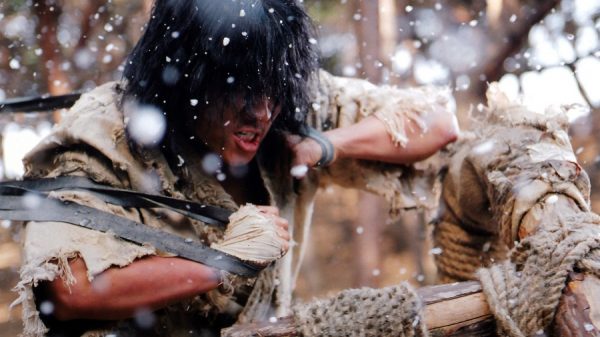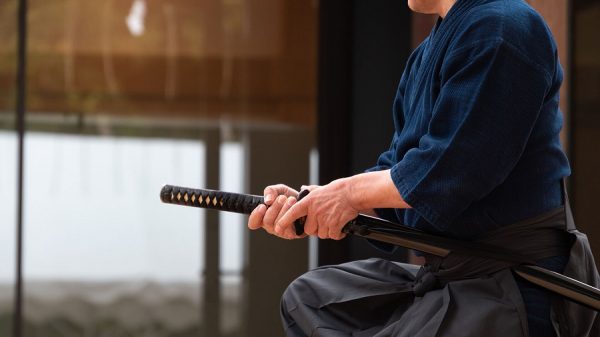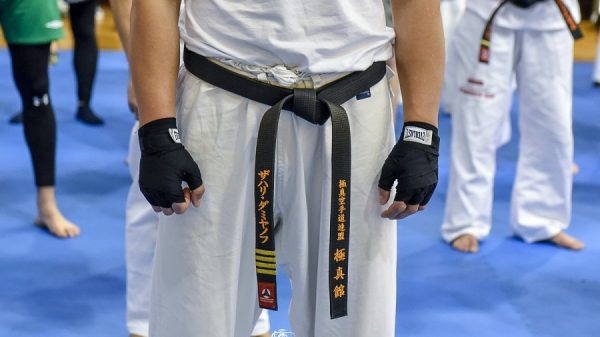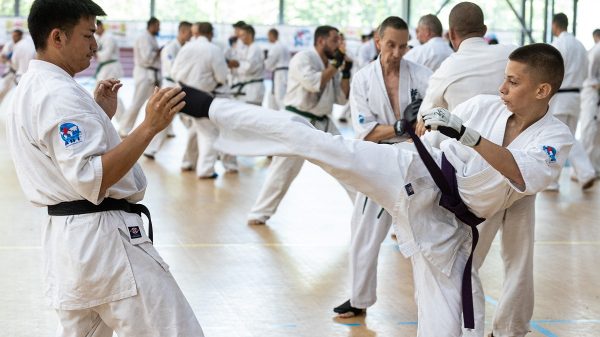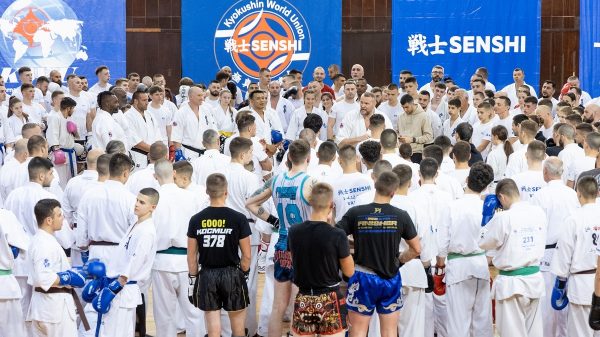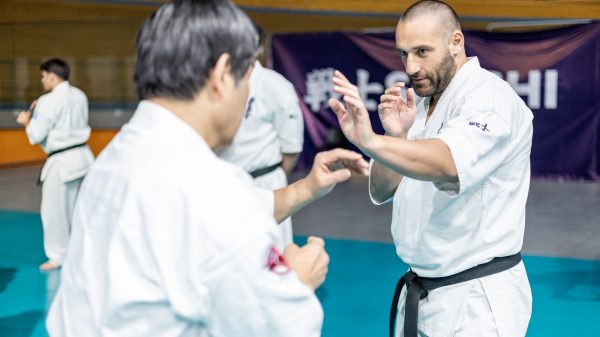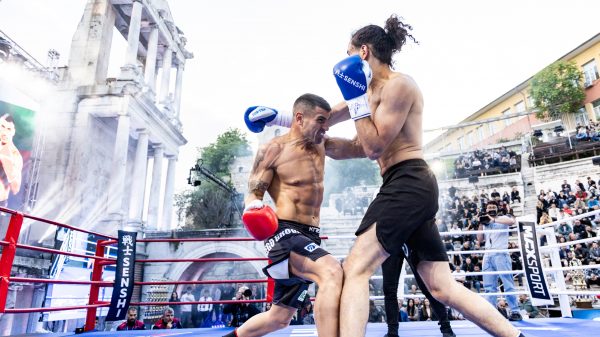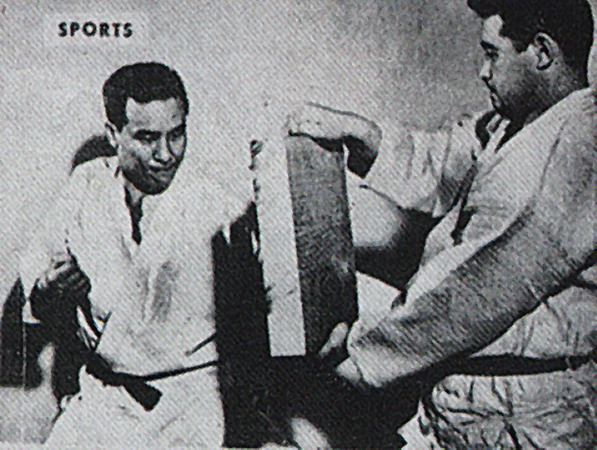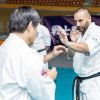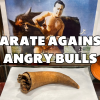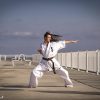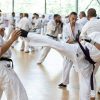TAMESHIWARI (breaking) cannot be separated from Karate as a whole. When speaking of Karate, people generally associate Karate with Tameshiwari, believing that the value of Karate exists in Tameshiwari skill and expertise. However, actually, Karate’s true value exists in technique, the arts, and spirit, not in Tameshiwari. Breaking is only a part of Karate and the biggest error is to set a high value on it. In keeping with this, Karate-Ka must not give a wrong impression of Karate by centering too much on it.
When considering the Karate boom around the world, I am forced to admit that Tameshiwari has played a large part in making Karate popular, as Tameshiwari generally seems very attractive to people. When the Korean War broke out in 1950, a Karate exhibition was held to which much foreign personnel of the Armed Forces was invited. They were not at all interested in Kata and Kumite demonstrations but when Tameshiwari was performed, the hall became as quiet as still water. They were fascinated by the performances, and thunder this applause arose over the hall.
There was a similar reaction in the USA when I visited 32 of that country’s States between the March and November of 1952. Kata, Kumite and Kihon, were also not welcomed. But, as soon as Tameshiwari began, even a noisy crowd of thousands was silenced in amazement, and later gave thunderous applause.
However, regardless of Tameshiwari popularity, true Karate has not progressed greatly because of the impossibility of holding satisfactory fighting matches. No Martial Arts can properly develop without fighting matches. In the past, all Martial Arts have developed and progressed by means of fighting, whether in true battle or merely by competition. However, Karate has no true match and has thus been slow to truly develop in a unified way. Kata and Kumite without true battle or merely by competitions. However, Karate has no true match and has thus been slow to truly develop in a unified way. Kata and Kumite without true fighting conditions is merely a sort of dance or physical exercise; it loses its Martial aspect styles that do not advocate full contact, it must be nearly impossible.
A Karateka with speed does not always have strong power and grip, the Karate-Ka with strength does not always have speed, and the Karate-Ka with both is a rarity indeed.
For this reason, it is difficult to judge matches without contact. Judo can be judged by a fall, and Boxing by a knockout, but non-contact Karate has no such exact standard of judgment, matches usually being decided on superiority or inferiority. I believe this obscure judgment prevents Karate from development.
This is why contact and Tameshiwari have been entered in Kyokushinkaikan tournaments as a measure of ability. It is true that tameshiwari is a part of Karate, it is a barometer for Karate-Ka to judge ability. A true Karateka should have three things; spirit, body, and arts perfectly harmonious, and I look up to any Karate-Ka with such abilities.
Of course, man is not God. However, I consider it man’s duty to engage in Martial Arts in order to make an effort to approach God. It is true indeed that man has sordid habits, but I think the value of man’s existence is in the efforts and studies he makes to accomplish his “way”.
Recently there have been many Championships in Karate, however, if a Champion could not break three 2-inch boards I would laugh at him. I claim that any Champion must have enough ability to kill a bull with a single blow. If he cannot do so, it would be doubtful if his punch is effective regardless of what ability he has to perform Kata and Kumite beautifully. A Karate-Ka must have more than just beautiful Kata and Kumite – he must have power.
Of course, it isn’t the purpose of Karate to fight wild animals, but it is one way to develop Karate ability and test it if there are no adequate matches
Speaking of Tameshiwari, there are more than 30 kinds, divided roughly into several divisions. Kumite and Tameshiwari are two sides of a coin or the front and back covers of a book. Supposing that Kihon, Kumite, and Kata are the parents, then Tameshiwari is the child.
It is as incorrect for a Karate-Ka to get caught in Kumite, Kihon, and Kata and to neglect Tameshiwari as it is to neglect all in favor of Tameshiwari.
People equate Karate with Tameshiwari, and to, be sure, Tameshiwari is the greatest interest in Karate. Without Tameshiwari, Karate would not have progressed throughout the world.
I should like to tell our readers that, Kihon, Kumite, and Kata make 7 points out of a possible ten, Tameshiwari makes ‘up the remaining three, and that all Karateka should have all 4 abilities, plus spirit.
By Sosai Mas Oyama


